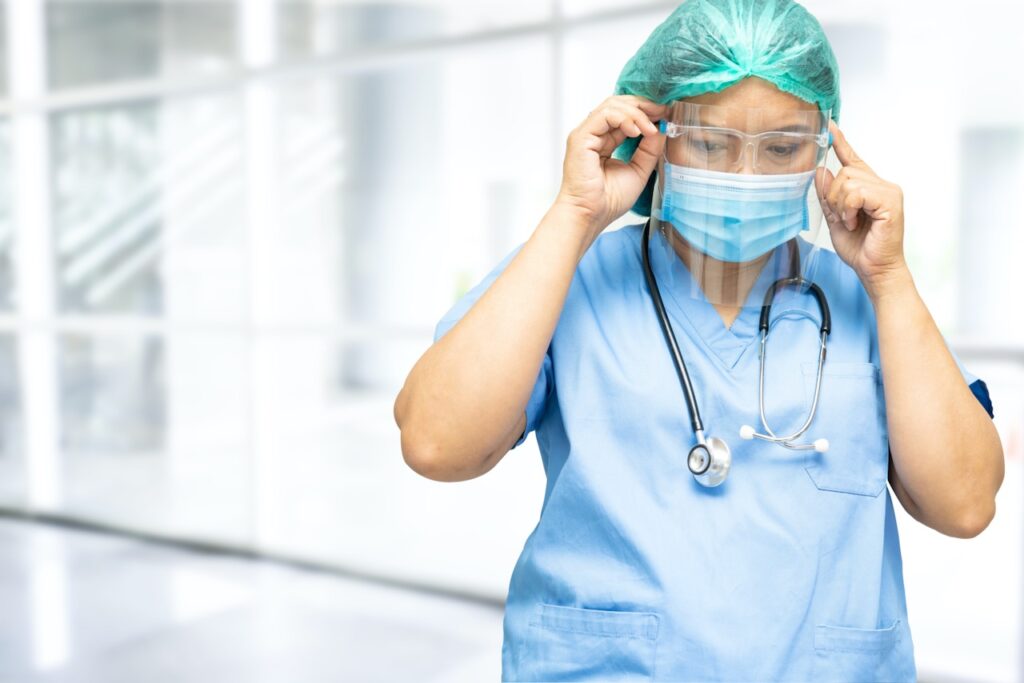
While it is recommended for unvaccinated individuals to wear masks to protect one’s mouth, nose, and throat from getting infected with the coronavirus, health care professionals who work in medium to high exposure settings are also recommended to wear eye protection, such as face shields and safety goggles to limit eye exposure to air-borne respiratory droplets.
This recommendation, suggested by the Centers for Disease Control and Prevention (CDC) and seconded by medical expert Dr. Anthony Fauci, is aimed at health care professionals with a higher risk of exposure to COVID-19, to provide them with more methods of protection for the tear duct areas of the eye which can let the coronavirus into the body and infect cells. Although the general public is free to wear any eye protection available to them, the CDC says wearing this equipment is optional, due to their lower risk of exposure.
Though infection through ocular exposure is not the most likely method of transmission, an early 2020 study by the World Health Organization (WHO) showed that wearing eye equipment could reduce the risk of a coronavirus infection by 6 to 16 percent. However, different types of eye protection are better than others at blocking the respiratory droplets from a cough or sneeze in different circumstances.
Face Shields
Paired with masks, face shields, or sheets of curved plastic that cover the entire face, can reduce the risk of contracting the coronavirus by blocking large respiratory particles that can transmit the virus. Since face shields have gaps that could allow smaller respiratory droplets to come through the sides and under the chin, the CDC does not recommend face shields as a replacement for masks. Therefore, while wearing face shields, health care professionals should also wear a mask underneath for maximum protection.
Safety Goggles
Unlike face shields, safety goggles, or plastic, tight-fitting eyewear that uses a strap to hold it in place, only protect the eyes. This makes it necessary to wear both face masks and safety goggles to provide a more complete protection of the face.
To provide maximum ocular protection, safety goggles must fit well, so that little to no respiratory particles can enter through the sides. Furthermore, it is crucial that health care professionals can see clearly while working. Preferred safety goggles should have either an anti-fog coating or good venting to keep goggles from getting foggy and obstructing vision.
Get Us PPE Eye Protection Supply and Demand
While eye protections are important to stop the spread of the coronavirus, the supply of these materials does not always meet the demand. Goggles, which are generally the more expensive of the two types, fall under that category.
Out of all the goggle requests that Get Us PPE got from facilities in need, only about 85%, or 128,925 of the requests could potentially be matched with donations. The other 15% of requests, or 22,941 goggles, could not be donated due to the lack of supply.
On the other hand, an ample supply of face shield donations allowed Get Us PPE to be well prepared to readily distribute face shields to facilities in need. With a deluge of face shields in supply, Get Us PPE received offers for 474,359 face shields, allowing the organization to be able to help provide ocular protection to facility workers and essential workers throughout the United States.




